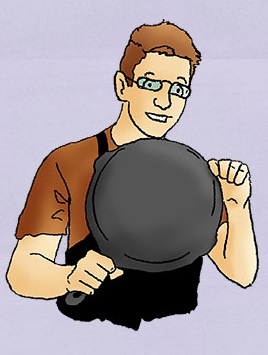We are pleased to introduce Food Comics from The Chopping Block where our resident Cartoonist Tom O'Brien illustrates his cooking adventures. It's no secret how much we love cast iron and how often we use them in our cooking classes and private events. But some people shy away from cast iron because of the care it requires. But as Tom shows us, the step-by-step process on how to care for your precious cast iron pans isn't really that difficult.

If you could use some new cast iron pieces in your collection, The Chopping Block's favorite lines Le Creuset and Lodge Cast Iron are 20% off in October!
Love our food comics but want a text-only version for easy reference in the kitchen? Download a PDF of the instructions here.












